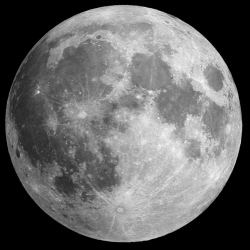
Naveen Jain, founder of Moon Express, sees moon exploration as part of a larger, ten-year vision that could span anywhere from research facilities for needed Mars-bound technologies to honeymoon destinations. That, and he’s eyeing SpaceX as a natural launch partner in reaching for those goals.
In a recent interview with CNBC, Jain expressed his reason for getting involved in private space exploration as one we are familiar hearing from Elon Musk: Multi-planetary habitation as a backup plan for the survival of the human race. With such a compatible perspective, Elon Musk and SpaceX certainly would seem to have many reasons to work with Moon Express in the future. Jain also expressed his willingness to work with Elon.
If all goes well in the space tourism economy, tourists will be able to book a flight to the moon within the next decade and stay in a hotel in orbit above Earth while watching cargo ship shuttle up from our planet’s surface, Jain told Space.com.
In mid-2016, the U.S. Government authorized Moon Express to travel beyond Earth’s orbit and land on the Moon in 2017. This breakthrough U.S. policy decision provides authorization to Moon Express for a maiden flight of its robotic spacecraft onto the Moon’s surface, beginning a new era of ongoing commercial lunar exploration and discovery, unlocking the immense potential of the Moon’s valuable resources.
Moon Express received the green light for pursuing its 2017 lunar mission following in depth consultations with the FAA, the White House, the State Department, NASA and other federal agencies.
With a launch date goal for 2017, Moon Express plans to send a rover to the moon’s surface to begin surveying its surface for the best locations for further operations to mine iron ore, water, rare Earth minerals, metals, carbon, nitrogen, hydrogen, and helium-3. Jain believes that because the challenges presented by moon exploration are similar to those presented by Mars – challenges such as high radiation and vast temperature differences – SpaceX and Moon Express have plenty of reasons to work together.
Moon Express founder Naveen Jain plans to be selling lunar flights for $10,000 per seat in 2026, a feat made possible by the increased affordability of space travel technology.
The first rocket Moon Express will use next year during their historic private mission to the lunar surface, the company’s MX-1 lander perched atop a Rocket Lab Electron booster, will cost about $5 million.
After that, however, Jain expects the price to drop dramatically with the same spacecraft budgeted to run $2 million within five years, and within a decade seats on lunar flights will be available for about $10,000.
Moon Express will compete for the Google Lunar XPrize with their 2017 lunar mission. The contest is a $20 million race to be the first team to put a robotic lander on the moon and drive 1,640 feet while beaming HD video back to Earth; second place is worth $5 million and another $5 million is awarded for achieving various goals.
Rocket Lab’s Rutherford engine is comprised of primarily all 3D-printed components, uses a batter-powered, electric turbopump to drive its propulsion and is capable of 4,600 pounds of thrust.
The Rutherford engine will power propulsion for both stages of Rocket Lab’s Electron rocket, a 20-meter rocket created out of carbon composites. The lightweight rocket is capable of delivering 100kg payloads to a 500km Sun-synchronous orbit or 400kg payloads to lower Earth orbits, according to the company’s founder, Peter Beck. The company’s ambitious goal is to begin a schedule next year that would involve launching up to 100 payloads a year from its launch facility in New Zealand, at a price of just $4.9 million per launch.
Rocket Lab uses the Rutherford engine. It is an oxygen/kerosene pump fed engine specifically designed in-house for Election using an entirely new propulsion cycle. Its unique high-performance electric propellant pumps reduce mass and replace hardware with software.
They have a carbon composite rocket body.
